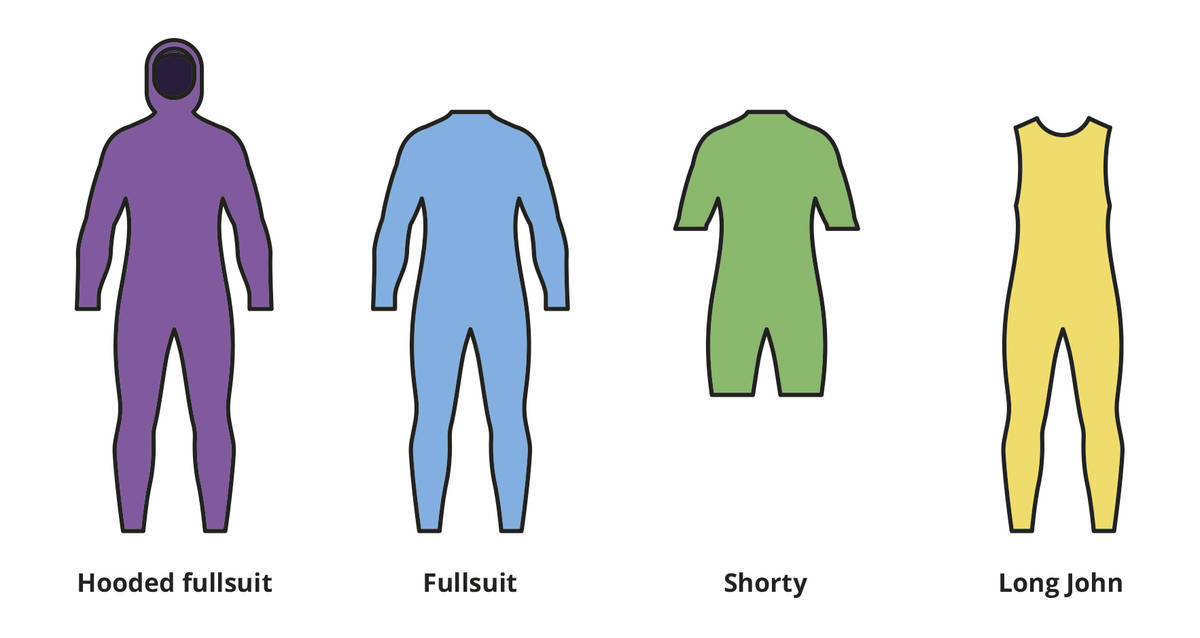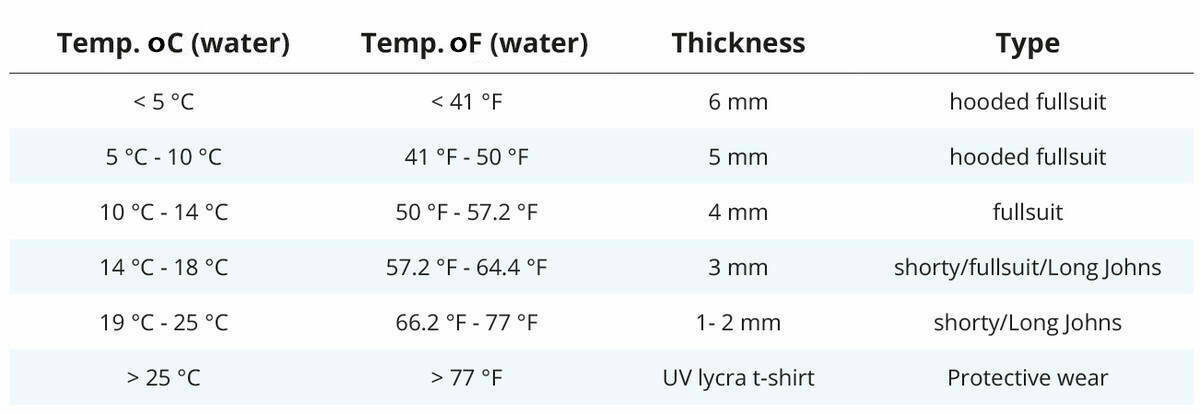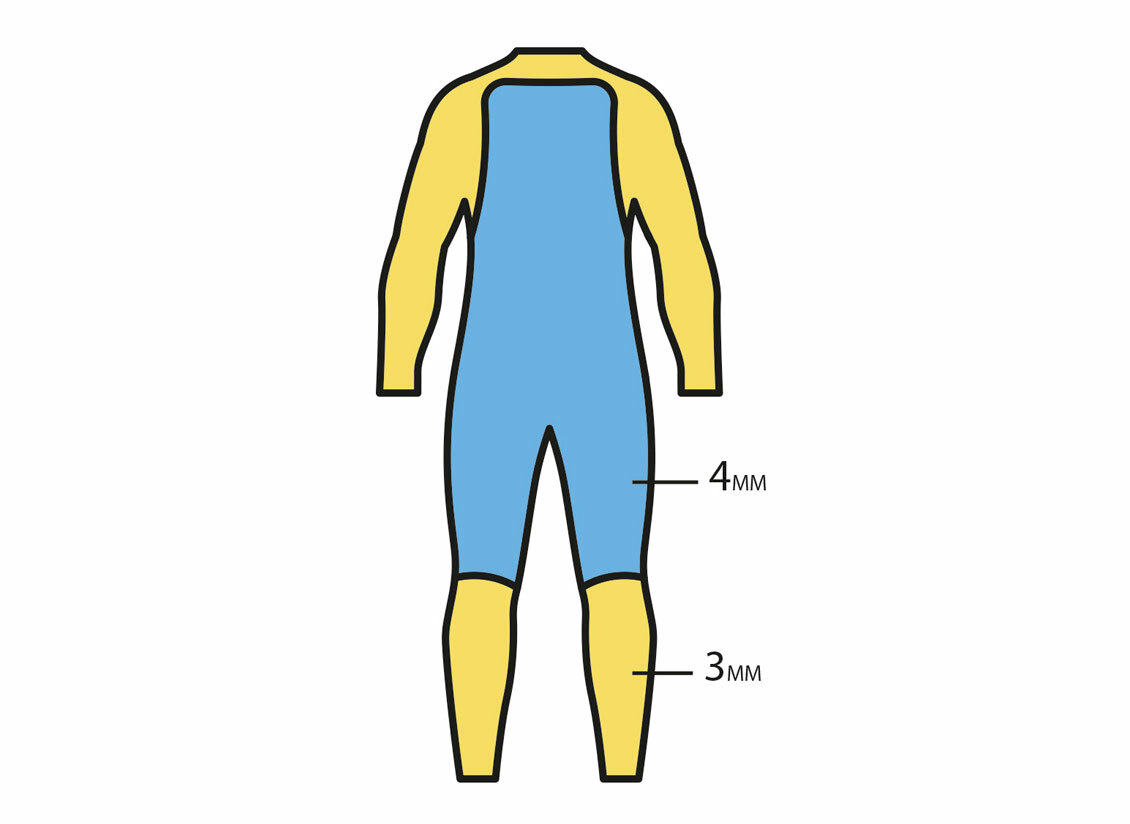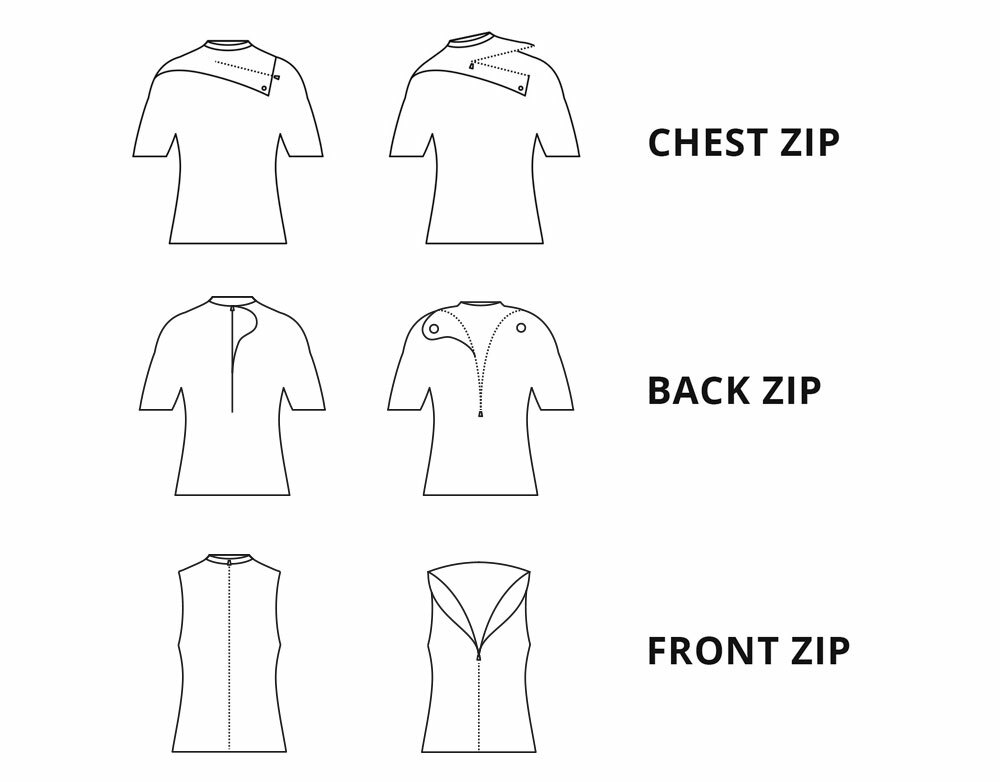Purchasing a Wetsuit
When acquiring your first, or a subsequent, wetsuit, consider the following essential aspects:
- its intended use and location
- thickness
- design
Wetsuits, made from neoprene, are designed for water sports like surfing, wakeboarding, kitesurfing, etc., and are also ideal for leisure activities such as tubing, ensuring warmth and comfort in water. Children’s wetsuits often serve as effective protective layers against the sun and cold water.
Many assume wetsuits keep you dry, but their actual function is to trap a thin layer of water warmed by your body.
1. Wetsuit Type and Thickness: Temperature as a Crucial Factor
Before diving into specifications, consider your water sport of choice. Typically, there are four main wetsuit styles: hooded full suit, full suit, shorty (also called spring suit), and Long Johns. Variations exist, such as a full suit with short sleeves or a shorty with long sleeves.

The primary role of a wetsuit is warmth, thus choosing one largely depends on the water/air temperature you're exposed to. The chill factor should also be acknowledged.
Wind sports like surfing, kitesurfing, and windsurfing call for thicker, warmer suits. However, flexibility and durability are crucial, necessitating a high-quality wetsuit. Wave skimboarding is similar. Generally, these activities warrant purchasing a full suit initially, followed by a long-sleeve/short-sleeve shorty.
Conversely, inland surfing, usually in warmer, quieter waters, requires less coverage (e.g., wakeboarding, flatland skimboarding, waterskiing). Initially, opt for a shorty (long/short-sleeved) and a full suit for colder seasons or the off-season.
SUP and kayaking often use a Long John (with an optional windproof layer) due to arm and shoulder movement, which could be restrictive in a thick full suit.
To simplify your choice based on water conditions, we've created a table outlining the ideal thickness and wetsuit type. Pre-visit research of your location is vital.
The chart is a guideline; personal needs and preferences also affect wetsuit selection. Ultimately, being warm and comfortable is paramount!

2. Interpreting Wetsuit Thickness
The temperature adaptability varies with activity level, external conditions, and body weight—bear these in mind. The UV Lycra suggested for hot climates is a sun-protective t-shirt.
You'll notice neoprene thickness can be more than a single number. What if it’s expressed with two or even three numbers separated by a slash?
The initial number shows neoprene thickness in the torso/hip region, and the second number reveals thickness at arms and legs. With three numbers - the first applies to the torso, the second to the legs, the third to the arms. For example, 4/3 mm signifies 4 millimetres at the torso and 3 millimetres at the limbs. A 4/3/2 mm wetsuit has 4 mm at the torso, 3 mm at the legs, and 2 mm on the arms. This helps maintain core temperature while preserving limb mobility.

3. Importance of Size and Design
Size
Choosing the correct wetsuit size is crucial for optimal insulation. It should fit like a second skin, maintaining a thin water layer between you and it (but not so tight it restricts circulation). Before entering water, test fit by raising arms overhead and stretching slightly. It should offer mild restraint, not restriction. Perform some bends and simulate paddling; successful movements indicate a good fit.
A correct wetsuit fit includes a snug neck to prevent water entry (without choking).
Wetsuits come in standard sizes - XS, S, M, L, XL, XXL, or UK sizes - 4, 5, 8, 10, 12, 14. Note if a size follows with ‘S’ or ‘T’, meaning short or tall for the standard size. For instance, ST indicates size small/tall.
Design (Zips and Seaming)

We’ve mentioned the importance of reducing water entry points like the neck area. Zipper styles and the seaming significantly influence water entry and exit. Less is more in this case.
Chest zips offer the best protection against water penetration, making this design warmer and a relatively newer option.
Back zips allow for simpler wetsuit access (and water entry), possibly feeling cooler. Older than chest designs, they are more accessible and cost-effective.
Front zip grants ample access for both user and water, often making these suits feel cooler.
Seaming is also crucial for warmth and preventing water ingress.
Flatlock stitching involves external and internal stitching of neoprene panels.
Sealed involves blind stitched and glued panels to block water, essential in colder temperatures.
Sealed and taped means glue over stitching is taped internally, trapping warm air inside.
4. What Constitutes a Quality Wetsuit?
Neoprene quality varies, and a superior neoprene contains more air, enhancing insulation and warmth. It should also be robust and flexible.
A premium wetsuit minimises water penetration, offers superior fit and insulation, and balances flexibility with durability. Usually, more stretch reduces durability, but a quality suit can provide both. Top-quality wetsuits are typically 1 mm thinner yet maintain similar durability, flexibility, comfort, and insulation due to high-grade neoprene.
Prepared for the Water?
In summary:
- First, consider the sport type and location
- Next, account for the water temperature
- Select the appropriate size
- Opt for a fitting design
And lastly - enjoy yourself!
